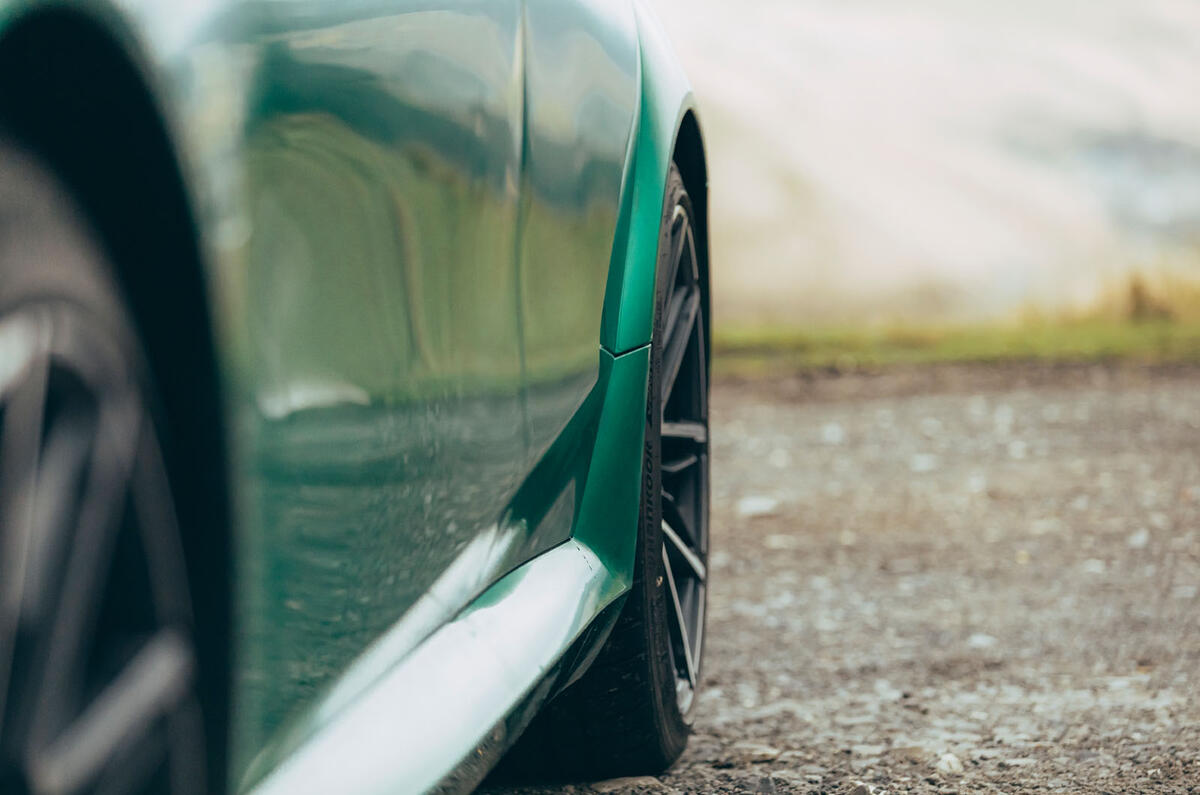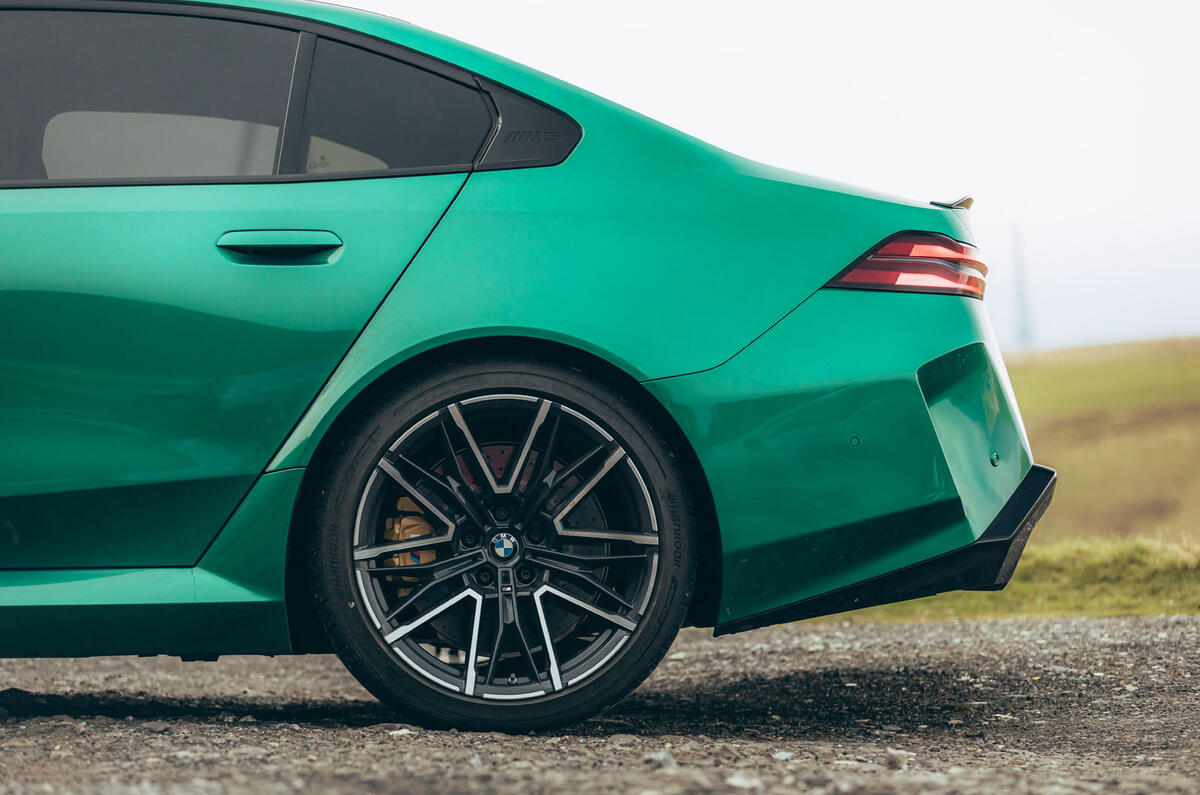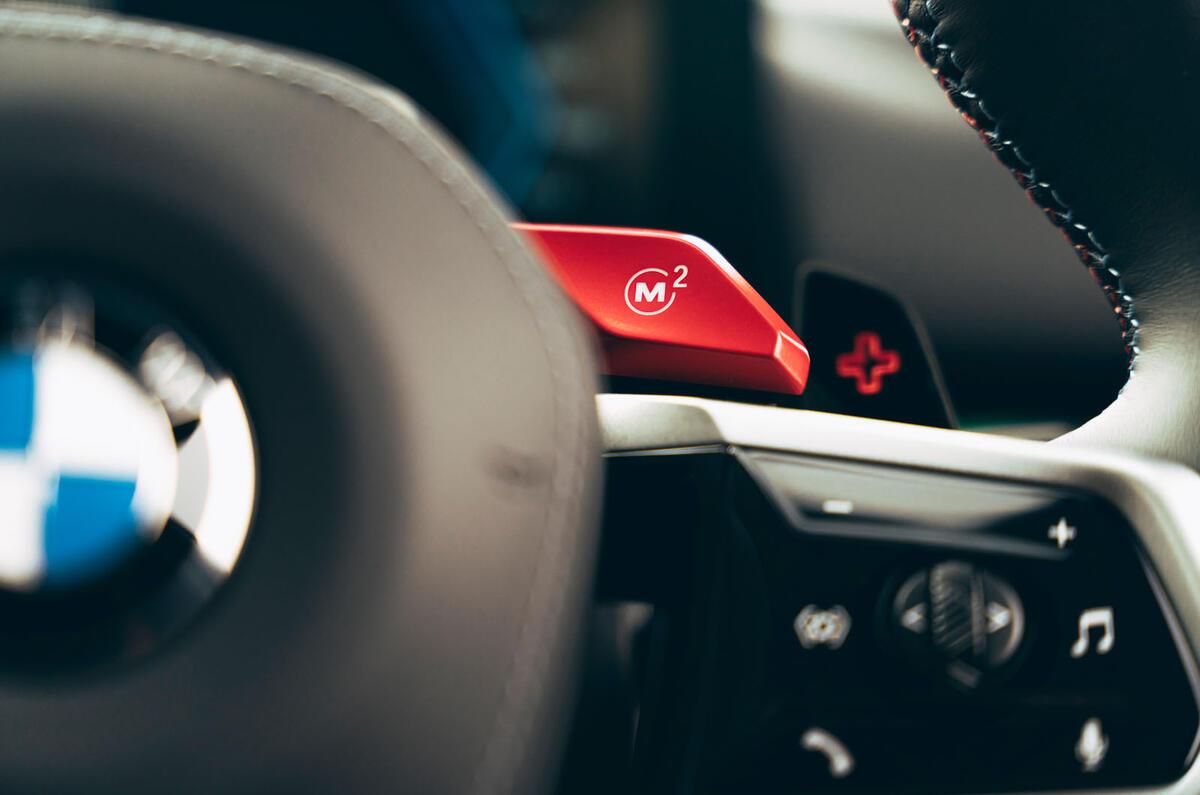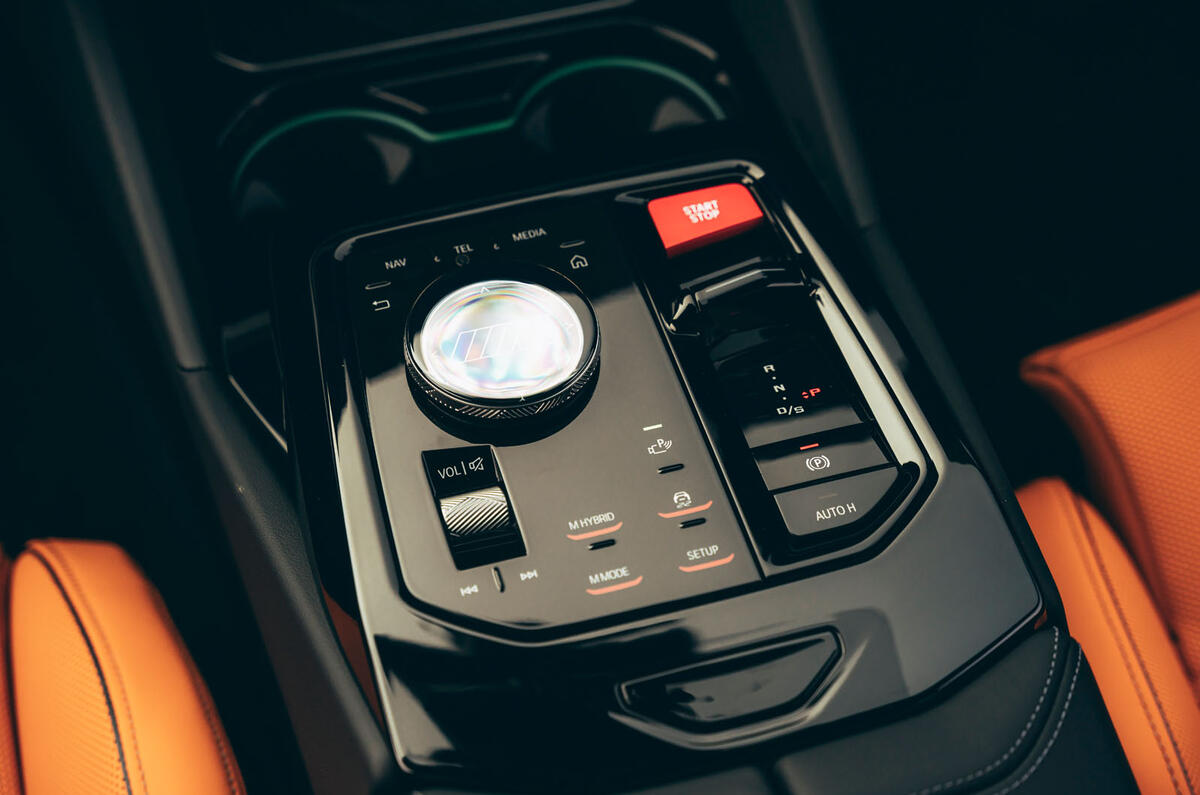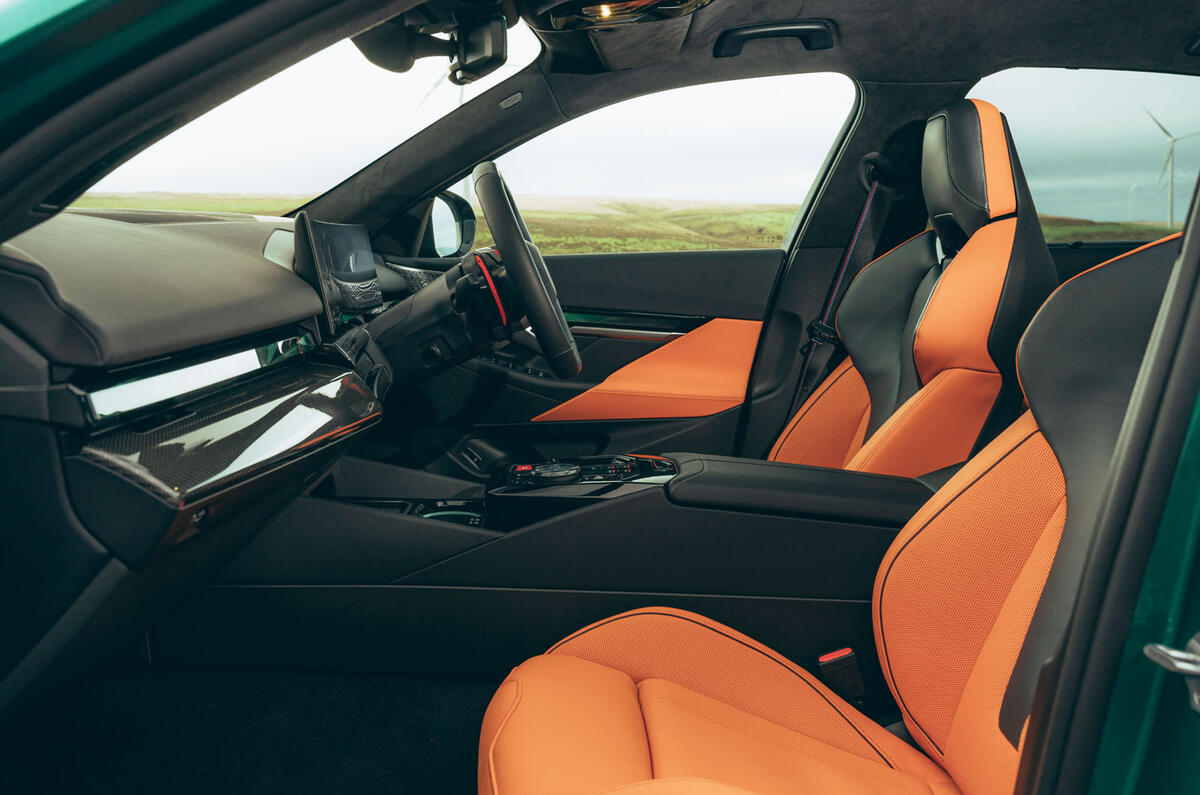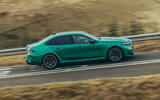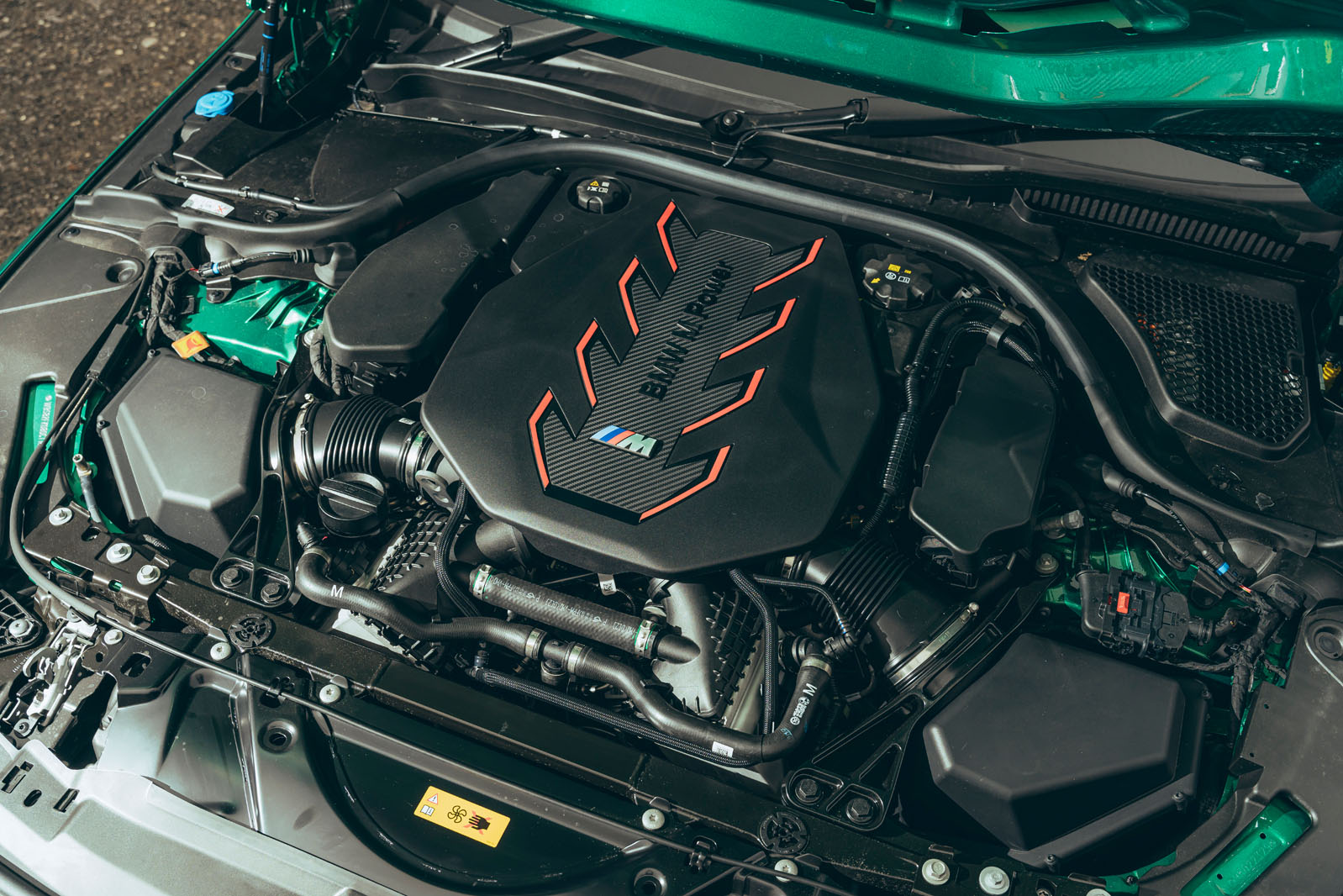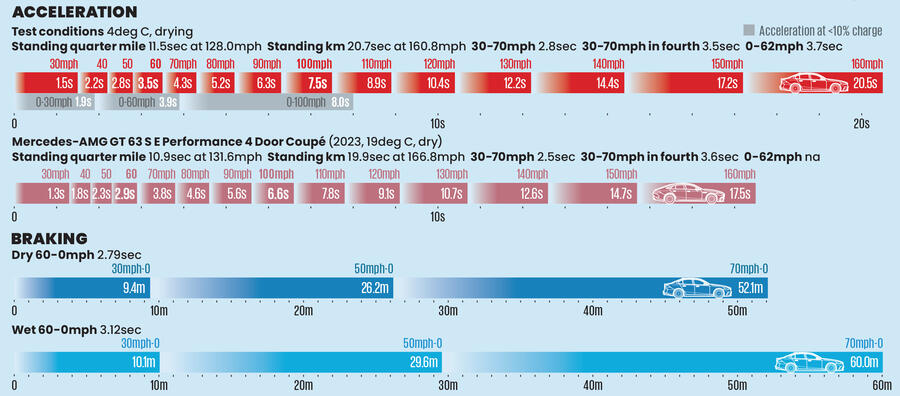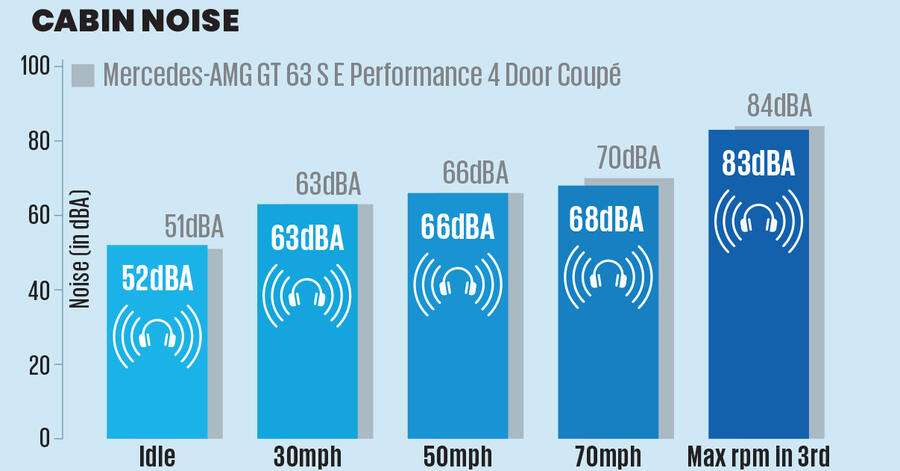Seek out a bumpier A-road, and the car’s completely redeveloped, widened axles do a little less well. Here, that 2.4 tonnes of kerb weight begins to tell when it’s excited and disturbed, but mostly because BMW’s passive anti-roll bars and coil springs make for fewer ways to actively manipulate and control it than are open to key rivals. And so the M5 becomes a little fidgety, niggly and recalcitrant over complex surfaces, animated over asymmetrical inputs and unable to maintain the uncanny, awe-inspiring dynamic composure that its most revered predecessors could.
Comfort and isolation - 4 stars
The M5’s 21in rear wheels, and what must necessarily be the firm sidewalls of its Hankook tyres, sound like they should make for a noisy cruising ride – but they don’t. Everyday touring comfort was clearly an objective during the development of this car, and the 68dBA that it recorded on our decibel meter at a 70mph cruise certainly tells that story (‘F90’ M5 CS: 73dBA; Mercedes-AMG C63 S E Performance: 70dBA).
The Comfort mode of the car’s adaptive dampers allows a fairly gentle, settled ride on most UK dual carriageways; it stops short of feeling supple and yet doesn’t fuss or jiggle. The car’s front seats offer excellent long-distance comfort and every kind of adjustment range you are likely to want, and while they are not mounted as low at the wheel as sports car regulars will be used to, they are certainly easy to berth and contribute to good visibility.
It’s the M5’s failure to find that supple, controlled, fast country road composure that lets it down a little, and why it sometimes fails to inspire you to really enjoy driving it in the places where smaller, lighter sports saloons can.
Track notes - 3.5 stars
Horiba MIRA’s wet and dry handling circuits suited the M5 well enough. Both are fairly smooth, wide in places and allow the car to demonstrate its competence, stamina and drivability when simply lapping fast – as well as some handling flair when its outer limits are explored.
Where an M5 of old might have quickly overworked its brakes – especially one weighing this much – the G90 didn’t, its optional carbon-ceramic discs coping well in our fade testing. After more than five fast laps, it did start to overheat its tyres, but no worse than most cars of its size and type probably would have.
The M5’s track handling impressed for its poise and throttle-on balance in the dry, and it didn’t need to be switched to 2WD mode to feel that way. In the wet, all that weight made it a bit prone to rolling into trailing-throttle oversteer, but only when deactivated electronic aids would allow.
The car’s handling is obliging and entertaining when it slides, though not as spookily controllable or predictable as little brother M3.








